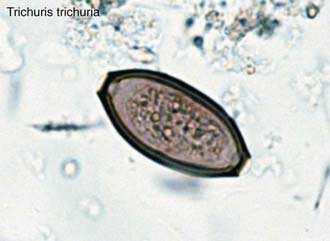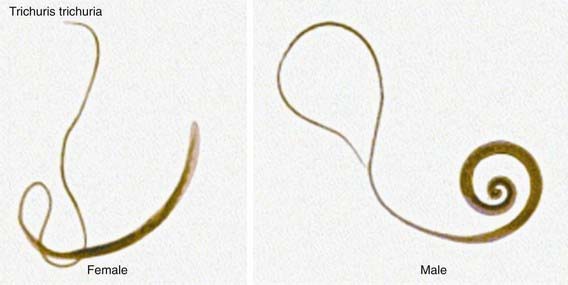Chapter 285 Trichuriasis (Trichuris trichiura)
Etiology
Trichuriasis is caused by the whipworm, Trichuris trichiura, a nematode, or roundworm, that inhabits the cecum and ascending colon of humans. The principal hosts of T. trichiura are humans who acquire infection by ingesting embryonated, barrel-shaped eggs (Fig. 285-1). The larvae escape from the shell in the upper small intestine and penetrate the intestinal villi. The worms slowly move toward the cecum, where the anterior three quarters whiplike portion remains within the superficial mucosa and the short posterior end is free in the lumen (Fig. 285-2). In 1-3 mo, the adult female worm begins producing 5,000-20,000 eggs/day. After excretion in the feces, embryonic development occurs in 2-4 wk with optimal temperature and soil conditions. The adult worm life span is approximately 2 yr.

Figure 285-1 Soil-transmitted helminth eggs.
(From Bethony J, Brooker S, Albonico M, et al: Soil-transmitted helminth infections: ascariasis, trichuriasis, and hookworm, Lancet 367:1521–1532, 2006.)




